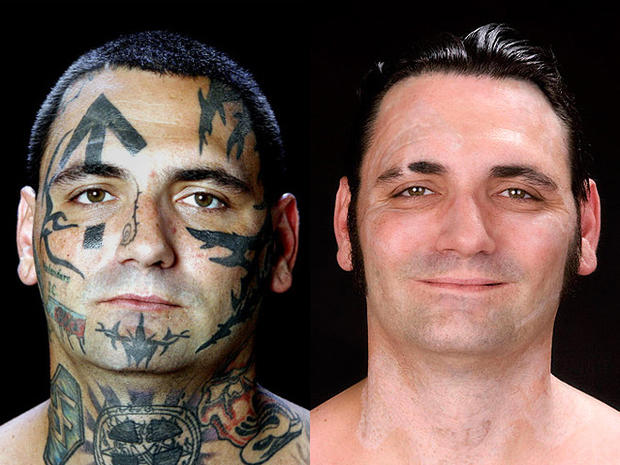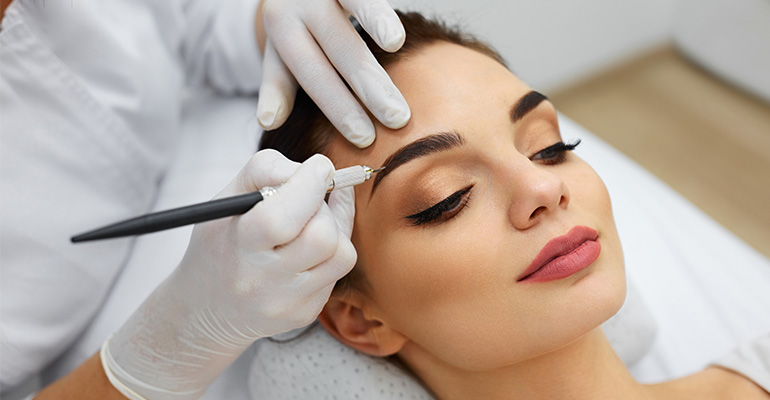High-intensity focused ultrasound (HIFU) is a relatively new cosmetic treatment for skin tightening that some consider a noninvasive and painless replacement for face lifts. It uses ultrasound energy to encourage the production of collagen, which results in firmer skin.
HIFU is most widely known for its use in treating tumors. The first reported use of HIFU for aesthetic use was in 2008.
HIFU was then approved by the Food and Drug Administration (FDA) in 2009 for brow lifts. The device was also cleared by the FDA in 2014 to improve lines and wrinkles of the upper chest and neckline (décolletage).
Several small clinical trials have found HIFU to be safe and effective for facial lifting and refining wrinkles. People were able to see results in a few months after treatment, without the risks associated with surgery.
While the procedure is also used for overall facial rejuvenation, lifting, tightening, and body contouring, these are considered “off-label” uses for HIFU, meaning the FDA has yet to approve HIFU for these purposes.
More evidence will be needed to find out who is best suited for this type of procedure. So far, HIFU has been found to be a promising treatment that could replace face lifts, especially in younger people who don’t want the risks and recovery time associated with surgery.
HIFU won’t work as well for people with more severe cases of sagging skin.
HIFU facial
HIFU uses focused ultrasound energy to target the layers of skin just below the surface. The ultrasound energy causes the tissue to heat up rapidly.
Once the cells in the targeted area reach a certain temperature, they experience cellular damage. While this may seem counterintuitive, the damage actually stimulates the cells to produce more collagen — a protein that provides structure to the skin.
The increase in collagen results in tighter, firmer skin with fewer wrinkles. Since the high-frequency ultrasound beams are focused on a specific tissue site below the skin’s surface, there’s no damage to the upper layers of the skin and adjacent issue.
HIFU may not be appropriate for everyone. In general, the procedure works best on people older than 30 with mild-to-moderate skin laxity.
People with photodamaged skin or a high degree of loose skin may need several treatments before seeing results.
Older people with more extensive photo-aging, severe skin laxity, or very saggy skin on the neck aren’t good candidates and may need surgery.
HIFU isn’t recommended for people with infections and open skin lesions at the target area, severe or cystic acne, and metallic implants in the treatment area.
Benefits of high-intensity focused ultrasound
According to the American Society for Aesthetic Plastic Surgery (ASAPS), HIFU and other nonsurgical alternatives to facelifts have seen a major increase in popularity over the last few years. The total number of procedures performed has increased 64.8 percent between 2012 and 2017.
HIFU has many aesthetic benefits, including:
wrinkle reduction
tightening sagging skin on the neck (sometimes called turkey neck)
lifting the cheeks, eyebrows, and eyelids
enhancing jawline definition
tightening of the décolletage
smoothing the skin
Study results are promising. A 2017 study involving 32 Korean people showed that HIFU significantly improved skin elasticity of the cheeks, lower abdomen, and thighs after 12 weeks.
In a larger study of 93 people, 66 percent of those treated with HIFU perceived an improvement in the appearance of their face and neck after 90 days.
HIFU is considered a safe, effective, and noninvasive procedure for tightening the facial skin.
Its advantages over a surgical face lift are hard to deny. There are no incisions, no scarring, and no required rest or recovery time. HIFU is also far less expensive than a face lift.
Most people see full results three months after their final treatment.
If you’re looking for a treatment that is quick, painless, and noninvasive, HIFU is an excellent option compared to a surgical face lift.
Of course, HIFU isn’t a miracle cure for aging. The procedure is best suited for patients with mild-to-moderate skin laxity, and you may need to have the procedure repeated in one to two years as the natural aging process takes over.
If you’re older with more severe skin sagging and wrinkles, HIFU may not be able to eliminate these skin issues.
























